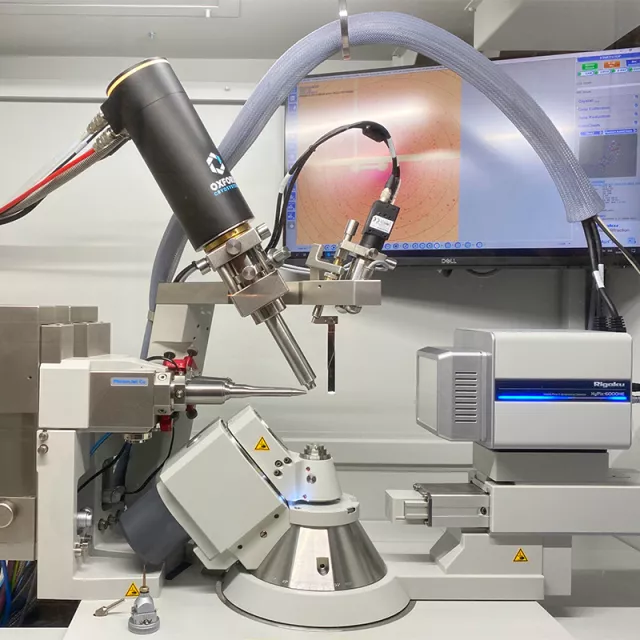DFG funding success for state-of-the-art chemistry device
Seventeen years after first purchasing a single-crystal x-ray diffractometer, Constructor University in Bremen has recently upgraded to the latest technology. Chemistry Professor Dr. Ulrich Kortz successfully secured funding from the German Research Foundation (DFG) for the second time.
Thanks to the successful grant application, the German Research Foundation supported the University with 50 percent of the costs, which amount to 600,000 Euros in total. The device is used in inorganic and organic chemistry to determine the position of individual atoms within a molecule. In order to celebrate the installation of the new single-crystal X-ray diffractometer, Professor Ulrich Kortz invited guests to the campus of Constructor University last Friday.
"It is wonderful that we will be able to continue working and researching on the highest level. I would like to celebrate this with everyone that put a tremendous effort in the new acquisition," said Kortz.


About 50 people gathered for the XRD Inauguration Symposium at the Campus Center. In addition to Kortz's welcome address, the program included presentations by scientists from the universities of Bremen, Hamburg and Hanover as well as Constructor University.
During the lunch break, the new single-crystal X-ray diffractometer could be inspected. It is the XtaLAB Synergy-S model from Rigaku, which replaces the previous device after 17 years of intense performance.
The new model is state-of-the-art and equipped with both molybdenum and copper X-ray sources, ensuring a wide range of sample materials to be measured. In addition, the new model is equipped with a liquid nitrogen cooling unit to allow crystals to be measured at low temperatures, such as -173 °C, which reduces the thermal movement of atoms and thus leads to more accurate measurement results. The XtaLAB Synergy-S has its own air-conditioned room in the Lab 2 building and is operated by the experienced scientist Dr. Bassem Bassil. In addition to crystals from the Kortz group, samples from interested colleagues at Constructor University and from colleagues and collaboration partners worldwide are measured as well.
Beside the opportunity for exchange and discussion, to mark the day there was the traditional northern German delight “Kohl und Pinkel” (kale and meat) on the menu by the Mercator College servery – much to the delight of many guests. The catering was kindly sponsored by the equipment manufacturer Rigaku.
Questions answered by:
Dr. Ulrich Kortz | Professor of Chemistry
ukortz@constructor.university | Tel.: +49 421 200-3235
Image 2: The device is used in inorganic and organic chemistry to determine the position of individual atoms within a molecule. (Source: Constructor University)
Image 3: Kortz celebrated the the commissioning of Rigaku's XtaLAB Synergy-S model with his team, colleagues and guests on campus. (Source: Constructor University)
